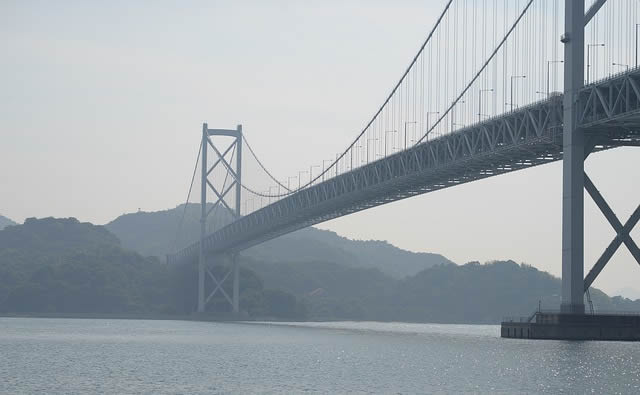先日から「Japan’s little-known seafaring past -「日本の知られざる海運の歴史」を読んでいます。

・「日本の知られざる海運の歴史」(1)
・「日本の知られざる海運の歴史」(2)
・「日本の知られざる海運の歴史」(3)
・「日本の知られざる海運の歴史」(4)
As I found over the next two days of driving the Shimanami Kaido as a pathway to exploring a number of the sites via the islands’ backroads, the Geiyo Islands are a microcosm of an extraordinary age.
その後2日間、しまなみ海道を走り、島々の裏道を経由していくつもの遺跡を探訪して分かったことは、芸予諸島は驚くべき時代の縮図であるということだ。
microcosm「小宇宙、小世界、縮図、(宇宙の縮図としての)人間(社会)」。
In addition to ruins of Murakami forts – one located on top of a mountain, a lookout tower from which the Murakami surveyed the sea lanes
山頂にあって村上氏が海路を見渡した展望台など、村上氏の歴史に触れることができる、
- I visited the largest collection of historical samurai armoury in Japan at Oyamazumi Shrine, which is dedicated to the Shinto gods who protect sailors and warriors, and a Chinese-influenced pagoda at Kojoji Temple, considered one of the finest examples of Muromachi architecture.
船乗りや武士を守る神々を祀る大山祇神社で日本最大の歴史的武具コレクションを、そして室町建築の最高傑作とされる高昌寺で中国の影響を受けた塔などを見学した。
Despite the political fragmentation of the Murakami era, it was a time of commercial and cultural vitality.
村上氏の時代は、政治的な分断はあったものの、商業的にも文化的にも活気ある時代だった。
fragmentation「分裂、破砕、分裂したもの」。
Japan’s fast-growing economy was propelled by maritime trade through the Seto Inland Sea,
日本の高度経済成長は、瀬戸内海を利用した海上貿易によって推進され
which included trade with Ming dynasty China and with new arrivals – Dutch traders, Portuguese explorers and Spanish missionaries – who introduced new art forms, guns and Christianity to Japan.
明代の中国との貿易や、オランダ商人、ポルトガル人探検家、スペイン人宣教師など、新しい芸術様式や鉄砲、キリスト教を日本にもたらした人々との貿易もその一つであった。
海外との貿易といえば、長崎の出島、これしか知りませんでしたが、瀬戸内でも活発な貿易があったんですね。
何だか「海賊」という言葉のイメージががらりと変わるほど、私にとって新しい歴史を教えてもらっています。
理由は単純明快!「少ないコストでしっかり楽しく学べるから」。
私自身の経験(高機能でビックリ)をびっしり書いていますので、良かったら読んでみてください。
下のバナーからどうぞ!






